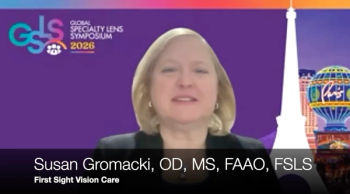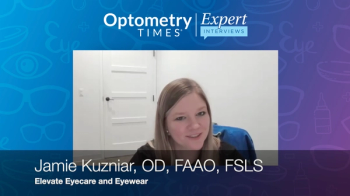
Artificial tear studied as contact lens lubricant
The benefits of an artificial teardrop that is commonly used to help relieve symptoms of dry eye may extend to contact lens wearers who experience dryness and discomfort caused by contact lenses.
Orlando, FL-The benefits of an artificial teardrop that is commonly used to help relieve symptoms of dry eye may extend to contact lens (CL) wearers who experience dryness and discomfort caused by their contact lenses, according to researchers.
Of the total subjects (n = 245), 166 subjects were randomly assigned to receive an artificial tear product of 0.5% carboxymethylcellulose and 0.9% glycerin (Refresh Optive Lubricant Eye Drops, Allergan), and 79 subjects received a lens rewetter solution of 0.5% carboxymethylcellulose (Refresh Contacts, Allergan). The subjects were instructed to use 1 to 2 drops of their respective products q.i.d. for 3 months.
Completion rates
The researchers studied completion rates in both groups and used questionnaires to assess any symptoms, problems, or complaints. They also conducted slit lamp examinations and lens-corrected Snellen acuity tests at baseline and at days 7 through 90.
Completion rates in both groups were high: 93.4% among the subjects using artificial tears, and 94.9% among those using the lens rewetter. There was an increase or no change in lens-corrected Snellen acuity at day 90 in 87.1% of the eyes of the artificial tear group (270/310) and 88.3% of the eyes of subjects using the lens rewetter (132/150).
Slit lamp examinations revealed little change from baseline for all lens types. At all visits through day 90, corneal staining was Grade 2 (mild) or less in all eyes except for one eye in the rewetter group. Overall, there were three reports from two subjects in the artificial tears group and two subjects in the lens rewetter group that reached Grade 3 for any slit lamp finding.
These findings would not be uncommon in any CL population of the study's size, regardless of eyedrop or rewetter use or non-use, Dr. Vehige said.
"A careful exam of most [CL] wearers will reveal a small degree of staining, hyperemia, or neovascularization due to the lenses themselves and environmental insult," he said. "We'd like to see as little of this as possible, but these findings are not alarming. It's an indication that the doctors in this study were looking very carefully."
Overall product acceptability as assessed by subject questionnaires was similar and very high in both groups. Among subjects who had a history of using a lens rewetter prior to the study, more subjects reported comfort improvement among the group that switched to the artificial teardrop than among the group that used the rewetter (53.2% versus 34.2%, p = 0.048).
Newsletter
Want more insights like this? Subscribe to Optometry Times and get clinical pearls and practice tips delivered straight to your inbox.













































